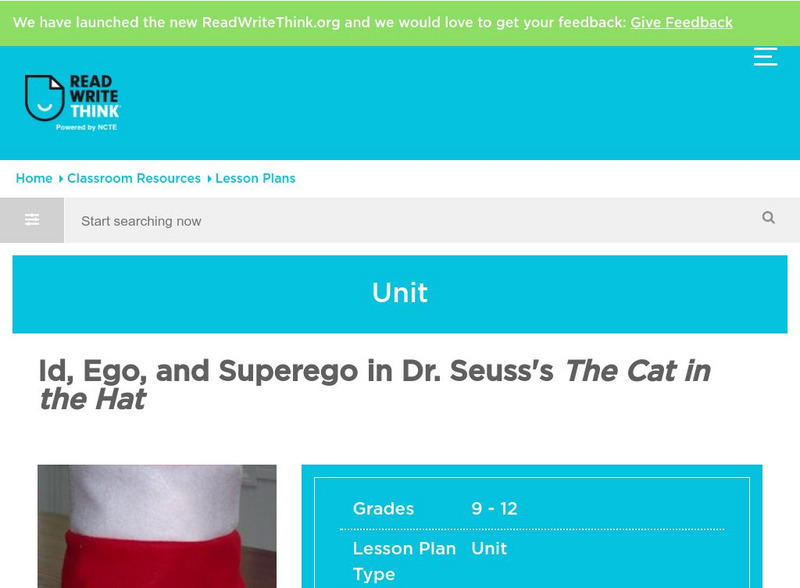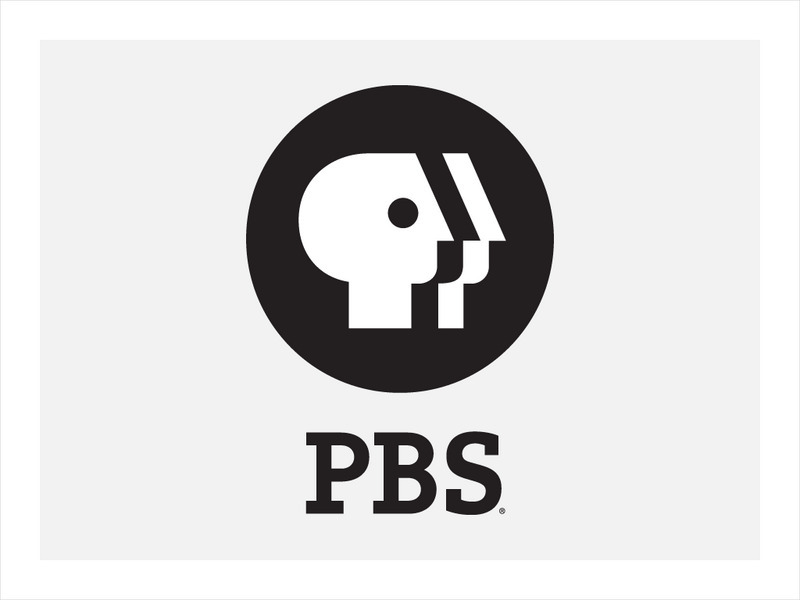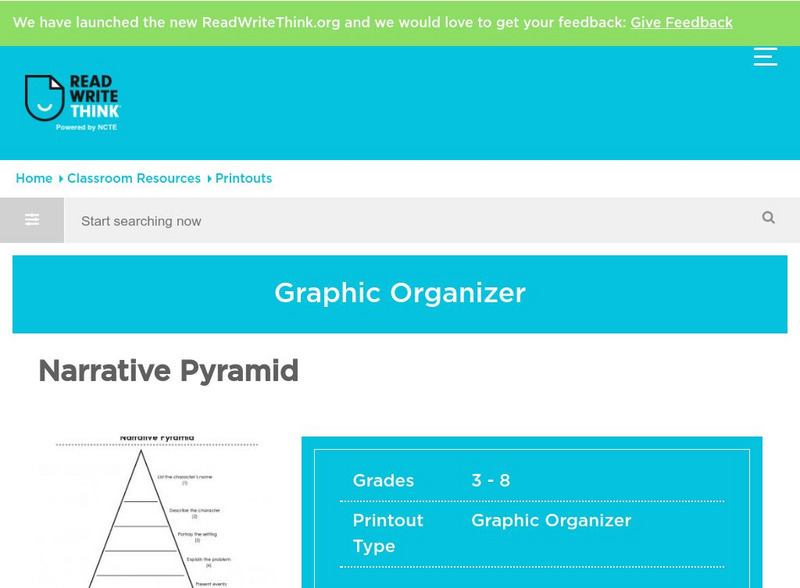Hi, what do you want to do?
Read Works
Read Works: Fourth Grade: Three Lesson Unit: Plot
[Free Registration/Login Required] A three-lesson unit focused on plot. Students identify and describe the elements of plot in the books Stone Soup by Jon J. Muth and Sweet Clara and the Freedom Quilt by Deborah Hopkinson. Then they...
Other
Elements of Fiction
Simple discussion of the elements of fiction with a specific section devoted to Freytag's Pyramid (aka "basic plot structure"). A good place to start for gathering information on the structure of narrative.
Read Works
Read Works: Plot 1st Grade Unit
[Free Registration/Login Required] A series of three lesson plans designed to teach students to identify problems and solutions in fiction text and to retell a story's problem and solution in sequence. Students learn to identify the plot...
HotChalk
Hot Chalk: Lesson Plans Page: Elements of a Story
This resource provides a lesson plan to teach students about the elements of a story.
Alabama Learning Exchange
Alex: Using a Fairy Tale to Teach the Elements of a Story
Students will hear and read different versions of a familiar fairy tale and identify what elements a story must have (character, plot, setting) for the story to be interesting and make sense. Using a Venn diagram, students will then...
ReadWriteThink
Read Write Think: Using Picture Books to Teach Plot Development and Confict Res.
Students read picture books to explore the concepts of plot development and conflict resolution. They first learn about the connections between reading and writing, and then revise their own writing. CCSS.ELA-Literacy.CCRA.R.4
Read Works
Read Works: Plot 3rd Grade Unit
[Free Registration/Login Required] A series of four lesson plans designed to teach students to predict problems and solutions in fiction text and to identify the relationship between problems and character conflicts within a story....
Alabama Learning Exchange
Alex: Using Fairy Tales to Teach the Short Stories
Familiar fairy tales are used as guides to help students analyze the elements of the short story: plot, theme, setting, point of view, and character.
Houghton Mifflin Harcourt
Holt, Rinehart and Winston: Elements of Literature: Guide to Bearstone [Pdf]
This .pdf guide is four pages of chapter by chapter plot, some background info, suggestions for wrapping up the book, and additional reading suggestions.
ReadWriteThink
Read Write Think: Id, Ego, and Superego in Dr. Seuss's "The Cat in the Hat"
Contains plans for seven lessons that use Dr. Seuss's "The Cat in the Hat" to teach the literary elements of plot, theme, and character to high school students. It also teaches about psychoanalytic criticism concepts such as the Id, Ego,...
Read Works
Read Works: Grade 2: Three Lesson Unit: Plot
[Free Registration/Login Required] A series of three lesson plans designed to teach students to identify story elements, retell a story using story elements, and see how characters affect the plot. Lessons are based on the books Dog...
Annenberg Foundation
Annenberg Learner: Literary Visions
Twenty-six half hour videos on literary analysis for high school students that feature authors, scholars, actors and noted critics. Topics include The Art of the Essay, Setting and Character in Short Fiction, Responding to Literature and...
Success Link
Success Link: Characters, Setting, Plot, Conclusion, and Summarizing a Story
This lesson plan offers a step-by-step procedure for teaching students how to identify story elements and to summarize a story. It explains how to use a "Who Am I" activity, as well as a linkage activity in identifying characters and...
Annenberg Foundation
Annenberg Learner: Literary Visions
A series of 24 instructional videos, each about 30 minutes in length, designed to teach literary analysis. Topics include Responding to Literature, The Elements of Short Fiction, Tone and Style in Short fiction, The Elements of Poetry,...
ReadWriteThink
Read Write Think: What's in a Mystery? Exploring and Identifying Mystery Elements
Contains plans for seven lessons that teach students about the plot structure, character, and setting of the mystery genre. In addition to objectives and standards, this instructional plan contains links to sites used in the lessons as...
PBS
Pbs Teachers: Story Writing With Arthur
This series of 12 downloadable activities teach students some basics of story writing, using books or videos from the PBS "Arthur" series as a springboard. Activities include creating story maps, asking questions about characters and...
ReadWriteThink
Read Write Think: Narrative Pyramid
A printable narrative pyramid where students can record information about a story including the character, setting, problem, main events, and solution. Directions on how to use this type of graphic organize as well as lists of teaching...
Better Lesson
Better Lesson: What's the Problem?
So...did they fix it? An important element of a story plot is a problem and it's solution. Identifying these is a way in which students can demonstrate comprehension.
AdLit
Ad lit.org: Classroom Strategies: Story Maps
Story Maps are used for teaching students to work with story structure for better comprehension. This technique uses visual representations to help students organize important elements of a story. Students learn to summarize the main...







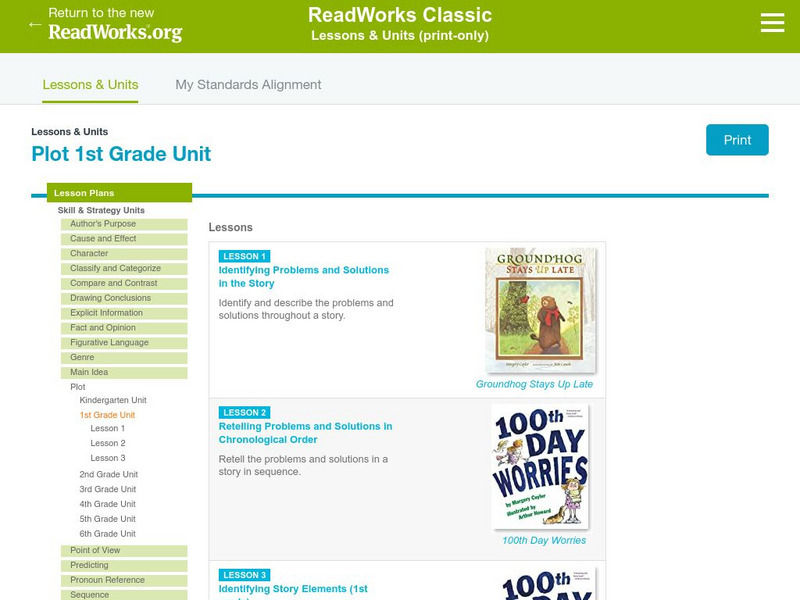



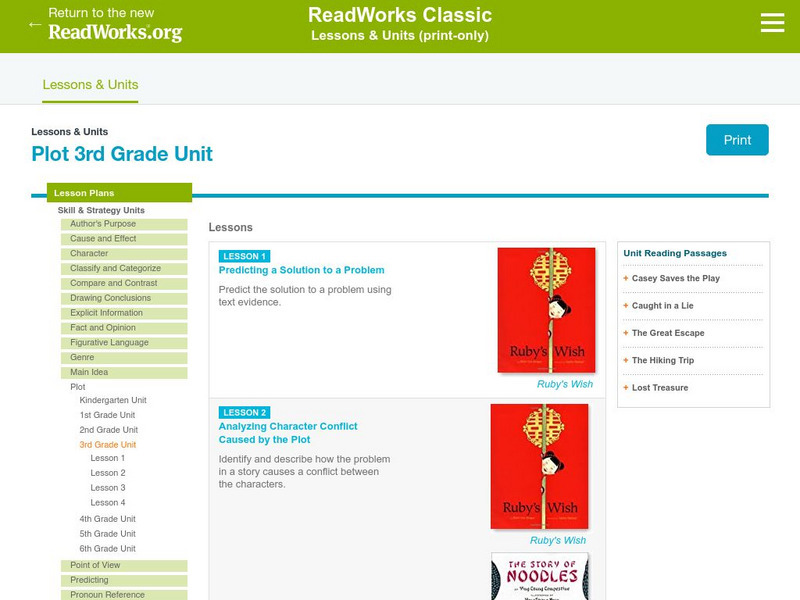

![Holt, Rinehart and Winston: Elements of Literature: Guide to Bearstone [Pdf] Unit Plan Holt, Rinehart and Winston: Elements of Literature: Guide to Bearstone [Pdf] Unit Plan](http://lessonplanet.com/content/resources/thumbnails/410076/large/bwluav9tywdpy2symdiwmduymc0xmziwoc0xmgf3mnbnlmpwzw.jpg?1589985274)
